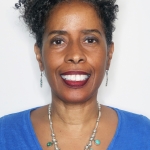
Julie C. Muraco
A Letter From the Chair of Americans for the Arts
Posted by Jun 07, 2021 0 comments

Julie C. Muraco
To all of those who champion and fight for the arts and cultural community in the United States; To all our members, our funders, our partners, and patrons who have generously supported Americans for the Arts; To the artists and arts professionals whom we represent: I have read your letters and comments over these last months as Americans for the Arts has faced challenges. Both I and other board members have talked with many of you directly. We have engaged thought leaders in the field for advice and wisdom as our organization grapples with dramatic change sweeping through society and our sector. We are committed to continuing this dialogue so that we can work together to find an equitable and sustainable future for Americans for the Arts. It would be easy to make incremental changes, but in order to catch up to the future, we know that what is now required is transformation.
Read More




Most Commented